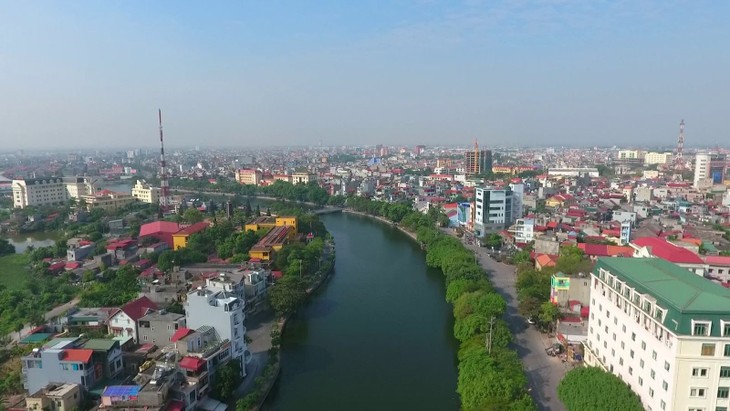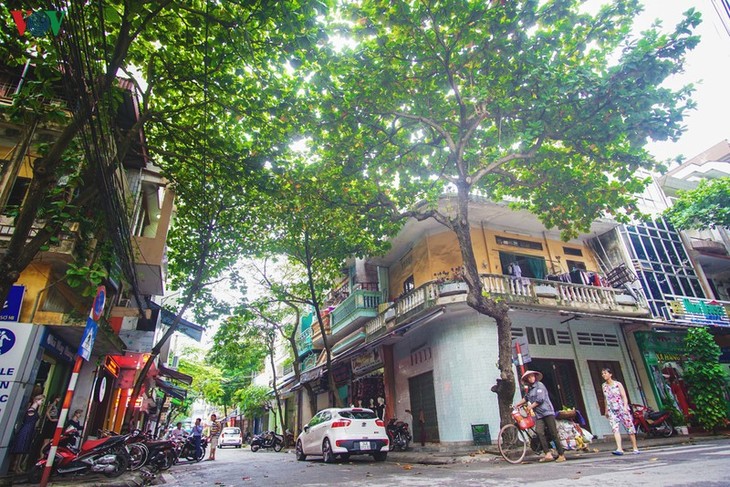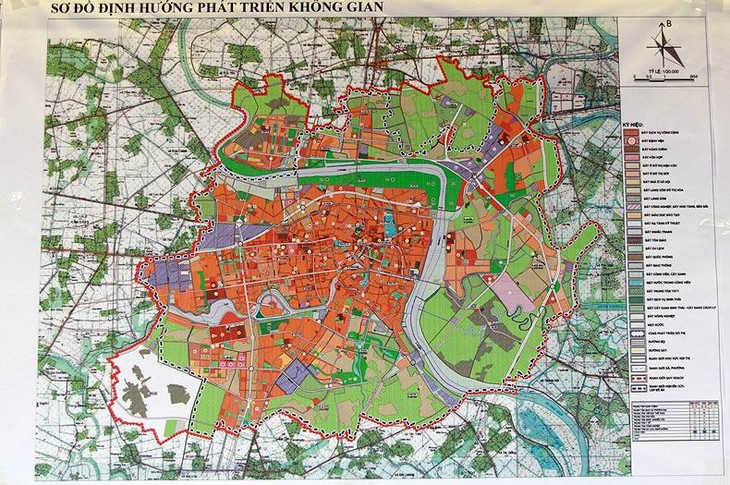(VOVWORLD) - Hai Duong city in Hai Duong province is busy these days after the Prime Minister recognized it as a first-class city. October 30 marks the date 65 years ago when Hai Duong town was liberated. Vu Mien, VOV’s correspondent in the northeastern region, reviews Hai Duong’s development over the past 65 years.
 The panorama of Hai Duong city (Photo: Vu Mien/VOV) The panorama of Hai Duong city (Photo: Vu Mien/VOV) |
90-year-old Nguyen Van Hai, former Chairman of the Hai Duong municipal People’s Committee, says he still remembers what happened on October 30, 1954.
Hai, 25 at the time, accompanied the liberation troops through the town holding a red flag with a yellow star. Later he held several official positions in the town through many more historical changes, but he never forgot the feeling of that autumn.
He said: “I remember that the last French soldiers withdrew from Phu Luong bridge at 8 a.m. One hour later a meeting was held at the Independence Garden at the center of Hai Duong city, also called the Eastern Land. A curfew was announced at 10 a.m. and took effect immediately. The take-over was completed in one day.”
Hai Duong was originally called Thanh Dong or Eastern Land, a reference to the area east of the Thang Long citadel.
After being liberated, Hai Duong town had no electricity, no water, streets full of garbage, an ailing economy, and 80% of the population illiterate. The problems were eventually solved through the celebration of the locals and the interim government. A craft street involved in making shoes, parasols, silver, and copper items took shape and was named Dong Kieu street.
Investment was made in porcelain, water, noodle, and pump factories to revive the then 4th largest economy in the North. Hai Duong city now is looking to achieve an economic growth rate of 14%.
Millions of dollars have been mobilized to build infrastructure in Hai Duong. The old streets have been widened and are now crowded with shops. These changes have been captured by photographer Van Ca Quyet.
 An ancient street in Hai Duong city. (Photo: VOV) An ancient street in Hai Duong city. (Photo: VOV) |
Quyet said: “Hai Duong changed a lot between the ‘200-year-old Eastern citadel’ photo I took 15 years ago and a second photo taken when Hai Duong was recognized as a second-class city in 2009. Now it has been upgraded to a first-class city. No high-rise buildings appeared in the first photo. I had to ask a stone quarry to let me take fireworks photos from their watch-tower. In the second photo, you can see many 3-storey houses clustered together. Now Hai Duong’s economy is very developed.”
Although the urban area of Hai Duong has expanded 400% in 65 years, houses built during the French occupation have been preserved. Some now serve as the headquarters of the Department of Transport and the Department of Culture, Sports and Tourism.
Historian Pham Quy Mui said: “Illustrious Vietnamese Confucian scholar Nguyen Trai was right to comment on the character of Hai Duong people. During the war they were strong. In the peace time they have lived in harmony. Hai Duong is famous for having a traditional fondness for learning. Mo Trach village has the honorary name of the Doctor Village.”
 Hai Duong city’s planning (Photo: Vu Mien/VOV) Hai Duong city’s planning (Photo: Vu Mien/VOV) |
To prove it truly is a first-class city, Hai Duong has created a plan to expand the city in 5 directions to produce 5 satellite urban areas and build three new urban centers to the east, west and south, and dozens of other small and medium-sized urban areas. Covering a total area of 1,500 hectares, the urban areas will be built along the Thai Binh and Sat rivers.
Tran Ho Dang, Deputy Chairman of the Hai Duong municipal People’s Committee, said: “The city’s goal in the new period is to build a green urban area, a liveable urban area in line with the Prime Minister’s direction. We will take advantage of resources, attract more investment, construct a comprehensive infrastructure, and improve the urban culture. In the medium term, we’ll rebuild the central area, build new social housing to replace the old apartments, improve people’s living conditions, and assure them a happier and safer life.”